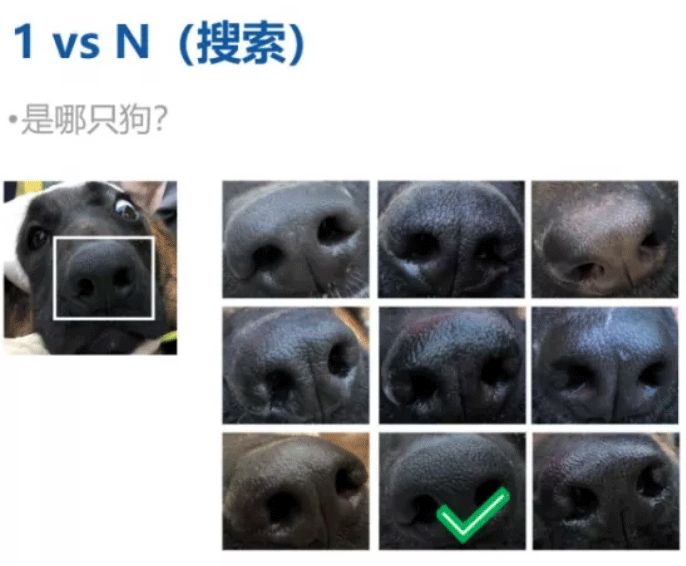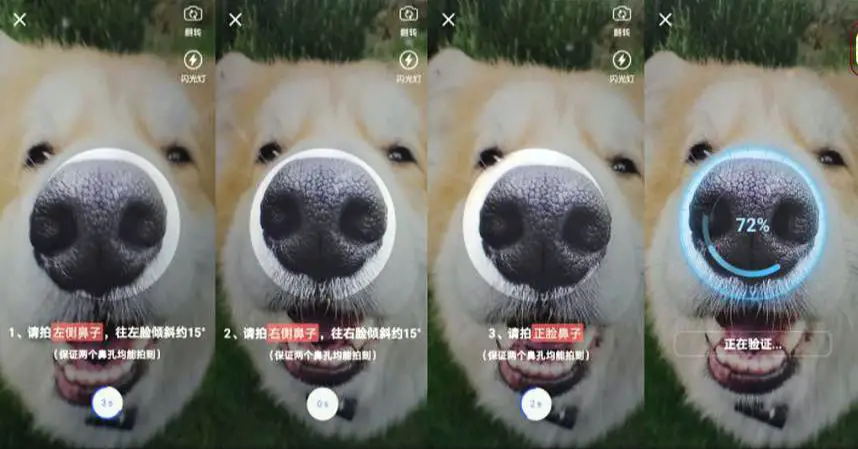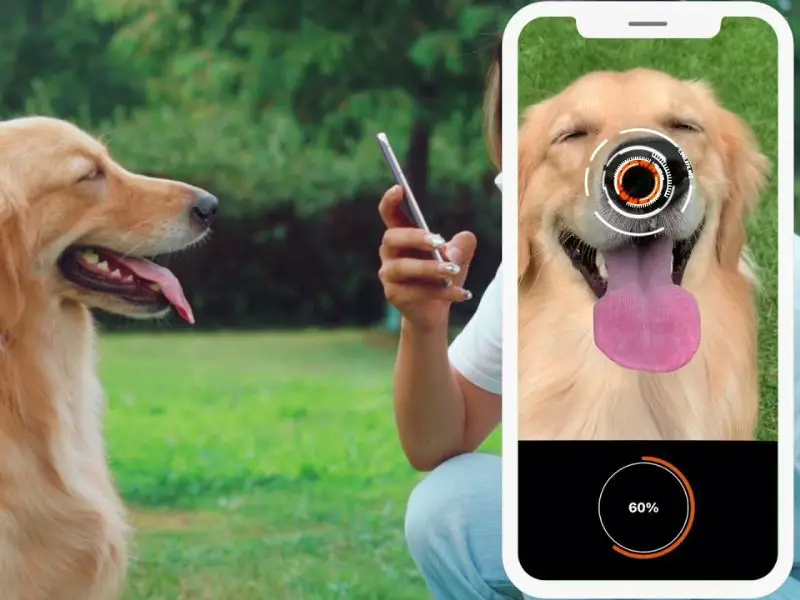Introduction
Did you know that a dog’s nose print is as unique as a human fingerprint? Just like our fingers, the pattern of ridges and lines on a dog’s nose is one-of-a-kind. When a dog presses its nose against a surface, it leaves behind a distinctive imprint that is completely individual to that dog.
In this article, we’ll explore the uniqueness of dog nose prints, how they compare to human fingerprints for identification purposes, and some interesting ways dogs’ special nose prints are being used and collected around the world. We’ll also look at whether other animals have distinctive prints like dogs and humans.
What Are Dog Nose Prints?
A dog’s nose print refers to the unique pattern of ridges and creases on the moist nose of a dog. Much like human fingerprints, the arrangement of these ridges forms a distinctive pattern that is unique to each dog.

These distinctive patterns are formed by the friction ridges on the dog’s nose. As a puppy develops, the skin on the nose folds and forms creases that become permanent as the dog matures. The ridges and valleys that form create a one-of-a-kind print, even among dogs of the same breed.
The nose print contains many different patterns including loops, whorls, and arches that create distinctive swirls and lines. The specific arrangement of these ridges and their shapes make it possible to differentiate one dog’s nose print from another.
Are Dog Nose Prints Unique?
Research has shown that like human fingerprints, the pattern of ridges and creases on a dog’s nose is unique to each individual dog. Studies utilizing inked paw prints and digital scanning have found enough distinctive differences between individual dogs to reliably tell them apart.

A key study published in the journal Animal Biometrics analyzed the nose prints of over 3,000 dogs from over 80 breeds. They confirmed that each dog’s nose print had a distinctive pattern of ridges and creases that was different from any other dog in the study. Even clones of the same dog still had slightly different nose prints.
This uniqueness makes a dog’s nose print a reliable way to identify individual dogs, like a “fingerprint” that can tell specific dogs apart. Law enforcement and veterinarians have used nose prints to identify lost or abandoned dogs by matching them to nose print records. Nose prints have also been proposed as a verification method for service dogs to confirm their identity and prevent fraud. The uniqueness provides a robust “biometric” for dogs that is very difficult to fake.
Comparing Dog and Human Fingerprints
Dog nose prints and human fingerprints have some notable similarities and differences when it comes to the patterns they form. Both are unique to each individual, with no two exactly the same among their species. The main structural difference lies in that dog nose prints are formed by the impressions of the leathery skin on the exterior of their nose, while human fingerprints are formed by the raised ridges on our fingertips.
The patterns seen in both dogs and humans are formed randomly as the skin develops in utero. They go through similar pattern types – loops, arches, and whorls. However, dogs have a more limited and simpler set of identifiable nose print pattern types compared to the vast diversity seen in human fingerprints. Dogs either have a simple loop running down the nose or some swirled lines. Human fingerprints have significantly more variation in the number of loops, arches, and whorls that can create unique patterns.
While the visible nose print patterns in dogs are more simplistic, the skin structure itself has some notable differences from human fingerprints when viewed under a microscope. The leathery nose skin of dogs lacks the set of clearly defined sweat pores that humans have along our fingerprint ridges. The dog’s nose print ridges also branch and interconnect less than the branching seen in human fingerprint ridges.
Overall, while not as complex and information-dense as human fingerprints, dog nose prints do share some similar core traits of having unique, individualized patterns formed randomly during development. But the specific skin structures and diversity of patterns is more limited in dogs compared to humans.
Other Animals With Unique Prints
While dogs and humans may have the most well-known and studied print patterns, other animals also have unique prints that can be used for identification purposes:
Koalas – Like fingerprints, each koala has a unique pattern of fine lines on their paws and fingers that are distinctive to each individual animal. Researchers use these patterns to identify and track koalas during ecological studies.
Cheetahs – Cheetahs have distinctive spot patterns on their coats that allow researchers to identify individual cheetahs in the wild. Their spot patterns are as unique as human fingerprints.
Tasmanian Devils – These marsupials have unique white markings on their coats, mostly on their chest and neck area. Researchers use the patterns to identify individual Tasmanian devils in the wild.
Giant Pandas – Like human fingerprints, giant pandas have unique markings on their paw pads that can be used to identify individuals. Researchers often use these paw print patterns to track and study pandas.
So while dogs and humans may have the most familiar print patterns used for identification, other animal species also possess distinctive prints that allow for individual recognition and study.
Using Nose Prints
A dog’s nose print can serve important identification and verification purposes. Since each dog’s nose print is unique, nose prints can be used to distinguish between individual dogs in much the same way that human fingerprints are used. Law enforcement and forensic investigators can collect and analyze nose print evidence from a crime scene and match it to a specific dog.

For example, if a dog was present at a crime scene, forensic investigators may be able to lift clear nose print impressions left behind on surfaces. These nose prints could then be matched to a suspect dog to potentially link it to the crime scene. Nose prints have been used as forensic evidence in a number of court cases.
In addition to crime scene analysis, nose prints can also be used for identification purposes in less serious contexts. For instance, shelters or kennels may keep nose print records of the dogs in their care to help verify their identity. Nose prints can also be used to identify lost dogs if their owners have a nose print on record.
Overall, while nose prints have some similarities to human fingerprints, they currently play a more limited forensic and identification role. However, their uniqueness means they have the potential to be a useful biometric identifier for dogs in certain contexts.
Collecting Nose Prints
Collecting clear nose prints from dogs can be challenging, but there are a few common techniques. The classic approach is using ink and paper. A non-toxic ink pad is pressed to the dog’s nose, and then the dog’s nose is pressed onto a sheet of paper. It’s important to apply the correct amount of ink and use high quality paper for clear imprints. Photography techniques can also be used. High resolution photos are taken straight on of the dog’s nose and then digitally enhanced for clarity.
There are some challenges to collecting good nose prints. Dogs tend to smear and smudge the prints, making it hard to get a clear imprint. Their noses also get dirty, oily, and wet which distorts the prints. The angle and pressure applied needs to be just right. Imprints are clearest when taken from puppies and dogs with shorter muzzles. Ensuring proper handling of dogs during the process takes training and patience. But with care, clear prints can be collected to identify dogs in the same way fingerprints identify humans.
Nose Print Recognition Software
Researchers have developed special software that can scan and recognize dog nose prints. This technology works similarly to human fingerprint recognition software. The software uses image processing and pattern recognition algorithms to identifyunique ridge patterns, inconsistencies, and minute details in a dog’s nose print.

Studies have found that nose print recognition software can identify dogs with a high degree of accuracy. One research program developed at Finland’s University of Helsinki was able to correctly match 99.5% of nose prints to the right dog. The error rate was comparable and in some cases better than human fingerprint recognition systems.
The reliability of nose print identification depends on the quality of the scanned image. Higher resolution scans capture more distinguishable details in the nose print, leading to more accurate matches. Pressure also needs to be consistent when obtaining the print. Despite these limitations, nose print recognition technology shows promising potential for canine identification and verification.
Nose Prints in Culture
Dog nose prints have made appearances in popular media and literature, taking on a symbolic meaning in some cases. Snoopy from the Peanuts comic strip is known for having a unique nose print. Some books and movies have featured nose print identification as a plot point, such as the dog detective book series Dog On It. Nose prints have come to represent individuality and uniqueness in these stories. The distinctive lines and patterns are used to signify the dog’s one-of-a-kind identity. Just as human fingerprints are unique to each person, a dog’s nose print captures their distinctive essence in an indelible way. This has made dog nose prints a popular symbol and storytelling device across various mediums.
Conclusion
In summary, while a dog’s nose print has some similarities to human fingerprints, they are quite different biological structures. Dogs have a unique pattern of ridges, deposits, and creases on their nose leather that can be used to identify them, much like human fingerprints. However, the nose print is not as unique between different dogs as human fingerprints are between people. They are also more subject to change over the dog’s lifetime as their nose grows.
Nose prints have some limited uses, such as identifying dogs in the show ring or linking dogs to crime scenes. However, the technology for capturing and analyzing nose prints is not nearly as advanced as for human fingerprints. Over time, we may see nose print recognition software improve and more practical applications emerge. For now, dog nose prints remain an interesting biological quirk and a fun way for owners to further personalize their pets.